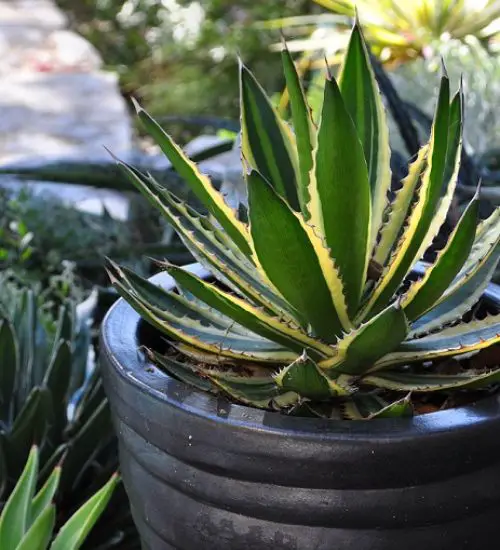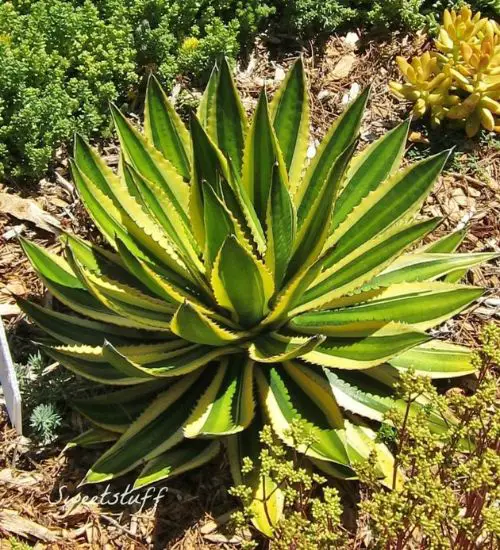Sun: full sun to partial shade
Water: Below average watering needs for a succulent
Temperature: Zone 1a from -60° F to -55° F (-51.1 ° C to -48,3° C) to Zone 10b from 35° F to 40° F (1.7° C to 4.4° C)
Winter Survival: Winter hardy
Propagation: offsets
Flower: in the summer
Flower Type: Yellow-Green
Toxic: Generally non-toxic to humans and animals
Dormant: winter
Space Requirement: Indoors & Outdoors
Common Problems: Plants may rot if overwatered, pests
Where to buy Agave lophantha quadricolor?
Basc Care for Agave lophantha quadricolor
Watering
What you need to remember is that this type of succulents needs to be watered for every 2 weeks
Can you water your succulent more than what its need? The answer is yes and no. In extreme conditions, you can water your plants more often when you notice the soil is completely dry.
Fertilizing
Only feed this succulent during its active growing seasons which means winter. Use the right fertilizer applied in the right amounts. Applying half-strength balanced fertilizer every month or so is recommended for optimal results.
Do not fertilize during winter as the plant is dormant.
Sun & Location Requirements for "Agave ‘Brilliance’"
Agave lophantha quadricolor does best when placed in an area that receives full sun to partial shade throughout the day. This variety of succulents can tolerate direct sunlight for short periods, but if the temperatures get too high or the light is too intense it may be beneficial to find a shadier spot.
As per this succulent profile, it is only able to stay healthy when the environment temperature is above the range of zone 1a from -60° F to -55° F (-51.1 ° C to -48,3° C).
Agave lophantha quadricolor is an incredibly resilient winter hardy plant that can survive in freeze conditions. Its thick leaves and stems, deep-rooted roots, and ability to store water all contribute to its ability to stay alive even in the coldest of winters. The roots reach deeper into the soil than most other succulents, allowing them to absorb moisture when the air is dry and cold.
Any succulents in the group will need a medium space to grow. You can place your pot at your table or window. Since this plant needs more space than mini succulents, you should consider do not plant them together with other succulents/plants.
Agave lophantha quadricolor also benefits from some indirect light throughout the day as well, so make sure you give it enough space to soak up light without becoming too exposed to heat.
Propagation
One way to propagate Agave lophantha quadricolor is by offsets. Taking an offset from the mother plant and potting it into soil will give you a brand new succulent with minimal effort.
Toxicity

Agave lophantha quadricolor is not known to pose any significant health risks, as it is not considered to be toxic. However, it is best to keep the plant away from young children and pets, as they may ingest some of the parts of this plant that could contain toxins which can cause mild skin irritation.
Pests and Diseases
Agave lophantha quadricolor can be affected common pests and diseases like most of the other succulents such as snails.
If you do spot any of pest signs, you can treat your succulent using below methods.
- Snails: clean infected plants, soapy water.
Besides that, to prevent serious health issues from happening, keep your succulent in a well-ventilated area and check it regularly for any signs of pests or health problems.


